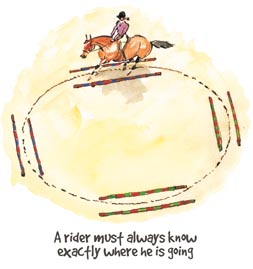Session with Philippe Karl and Michel Robert - Catapulte
Philippe Karl, a former “Ecuyer” from the Cadre Noir of Saumur, teaches clinics worldwide. Michel Robert who is always looking for improvement and performance, called him to improve the dressage of his horses. We’re watching in this video a flat work session with the mare Catapulte. This is a unique opportunity to witness the exchange of ideas between two famous names of today’s equestrian world.
Looking for a better balance with Catapulte.
Philippe Karl, former “Ecuyer” from the Cadre noir of Saumur, competed in eventing and in show-jumping, before focusing on dressage only. Nowadays, he teaches clinics world-wide. He created the school of lightness in order to pass-on his training method to instructors.
Michel Robert who is always looking for improvement and performance, called Philippe Karl to improve the dressage of his horses.
The mare balances herself on the forehand which is not always easy to manage. Philippe Karl shows his method based on the search of lightness. His perfect position allows him to work with his hand slightly up in order to get Catapulte’s forehand lighter. His work is based on slow gaits for a long time. After he obtained from the mare a good position, he can start some canter work, especially some movements like shoulder forward and half-halt.








 The sport horse’s back is the most engaged area of his body and the most fragile, We have to pay a particular attention to the area from the withers to the base of the tail. Most pathology, including lameness, takes root in the malfunction of the top line. It’s pretty obvious that a horse with back pain will not be able to perform any athletic activity.
The sport horse’s back is the most engaged area of his body and the most fragile, We have to pay a particular attention to the area from the withers to the base of the tail. Most pathology, including lameness, takes root in the malfunction of the top line. It’s pretty obvious that a horse with back pain will not be able to perform any athletic activity.


 JI usually start by drawing on the ground a first circle with a diameter of 15 metres and a second slightly larger one forming a circular corridor (1 metre wide) within which the rider is allowed to ride. You can also create this corridor placing poles on the ground.
JI usually start by drawing on the ground a first circle with a diameter of 15 metres and a second slightly larger one forming a circular corridor (1 metre wide) within which the rider is allowed to ride. You can also create this corridor placing poles on the ground.